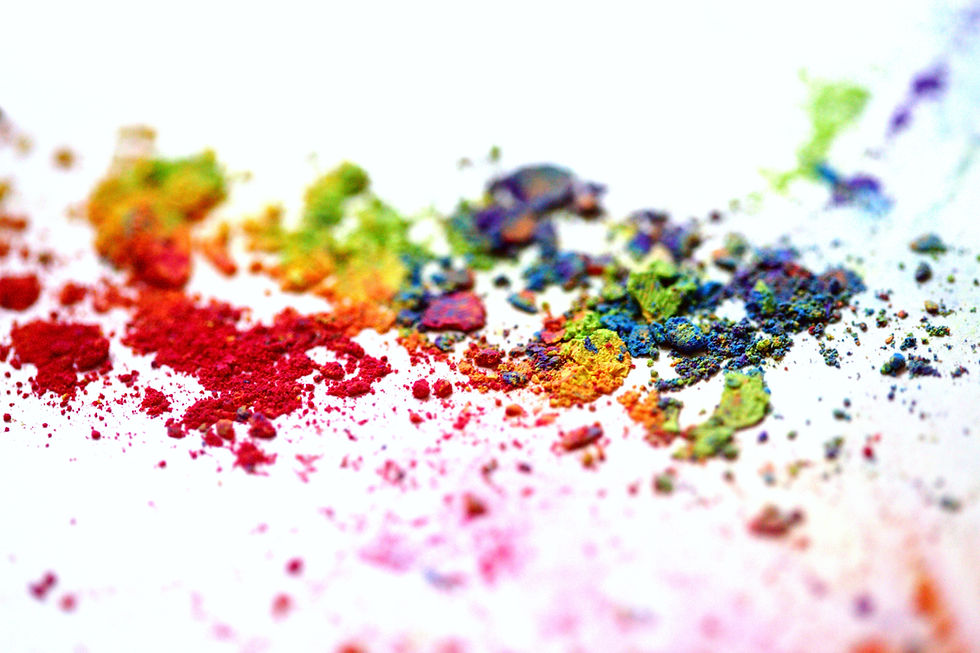Pink, the female colour and independent tint of red
- Laura Longoni

- Feb 17, 2024
- 3 min read
Updated: Mar 5

“Pink is a gentle reminder to embrace your femininity fearlessly.” Daniel Williams, “Reclaiming Femininity: The Strength of Pink” (2017)
(Read more at: https://www.blinkist.com/magazine/posts/paint-world-love-top-15-inspiring-pink-quotes-brighten-day?utm_source=cpp)
Even though the colour Pink is basically a tint of red (obtained by mixing red and white), it is considered a completely independent colour that, together with brown, belongs to the category of non-chromatic colours.
It is the colour automatically related to the female world, romantic love and emotions. In this post I will talk about the origin of the colour name itself, its meaning in psychology and symbolism and shades for art.
Where does the colour name "pink" come from?
The term pinks originates from the German term “picken” that during the 14th century meant “to decorate with a perforated or punched pattern”.
In the 17th century the term pink was used to identify a yellowish pigment that, combined to a blue one, generated a greenish colour.
Today the terms pink is based in many languages on the colour of the rose flower.
What does the colour "pink" mean in psychology?
Pink, considered a tinted red, is usually related to love but with a tendency to romance and charm. It is the female colour and it has both a positive and a negative side. As positive association it symbolizes childhood, friendship, affection, harmony, inner peace, compassion, nurturing and approachability. It could be also said that pink has all red aspects tempered through the qualities of white. On the negative side, it is often associated to a tendency of over emotionality or timidity.
What are the most important pink pigments?
As a tint of red, true pink pigments don't exist. The pink paint is created by mixing red and white pigments or violet pigments from the quinacridone family.
What are the most common shades of pink?
Pink comes in different shades of reds, roses, and magentas.
Peach
The colour peach (or peachy) is used to identify the colour similar to the one of the peach fruit. It is a pale orange-pink, whose name comes originally from the Latin term “persica” meaning “fruit from Persia”, which in Middle English was translated into “perche”. The colour name in the English language was used for the first time in 1588.
In 2024 the coloru "Peach Fuzz" has been elected Pantone Colour of the Year.
Apricot
Similar to peach colour, the colour apricot is used to identify a pale yellowish-orange pink similar to the one of the flesh fruit. The name comes from the Arabic word “Al-birquq” and was used for the first time as a colour name in 1855.
Magenta
Magenta is a purplish red and one of the primary colours in the CMY(K) colour mixing model. The complementary colour is green and the two secondary colours are a pinkish orange and a bright purple. Sometimes the colour is considered to be a shade of violet.
Even though originally the colour was named after an aniline dye made and patented in 1859 by the French chemist François-Emmanuel Verguin, the name Magenta was chosen to celebrate the Italian-French victory at the Battle of Magenta fought between the French and Austrians on 4 June 1859 near the Italian town of Magenta in Lombardy.
In art the colour magenta is usually produced using the pigment “Quinacridone magenta” PR122. Sometimes the pigment PV19 Quinacridone Violet is sold under the commercial name Magenta or Primary Magenta.
Final words.
This was my stop on our journey to discover the color wheel and my favourite colour.
Is pink also your favourite colour?
Thank you for reading. If you like the post, leave a like, a comment and don't forget to follow my blog, Instagram and Threads and share the content on your social media.
In the next post I will take a look at the next colour on the colour wheel, a symbol of elegance, mystery and prestige: violet.
Until then I hope you will have a great creative day!
Laura




Comments